
The United Kingdom launch of Marieke Clarke’s Mambo Hills: Historical and Religious Significance took place in Oxford during the Britain Zimbabwe Research Day on 20 June 2009. Professor Terence Ranger of St Anthony’s College spoke at the launch.
Mambo Hills: Historical and Religious Significance (2008, ISBN: 978-0-7974-3589-6) considers the sacred site to the north-east of Bulawayo that is also known as Intaba zi ka Mambo or Manyanga. Officials of the Mwali Religion that is practised there took leading roles in the War of the Red Axe of 1896, which nearly ended British South Africa Company rule in Southern Rhodesia.
In this path-breaking study, Marieke Clarke draws on oral tradition as well as archival material to write the history, up to recent times, of this area that has importance across Zimbabwe.
Review from Britain Zimbabwe Society Newsletter
by Dr Joost Fontein, University of Edinburgh
Zimbabwe’s landscapes are littered with archaeological and historical sites. These range in scale from the truly monumental, such as Great Zimbabwe and the other 200 or more stone-walled ruins associated with it by style or history, to the more ephemeral, recent remains of abandoned homesteads and settlements, such as Old Bulawayo; and in age from the ancient rock art of innumerable caves to the much more recent remains of the Rhodesian misadventure. Sacred places and religious sites too pepper the landscape, ranging just as hugely in scale and age as archaeological and historical sites and indeed, unsurprisingly perhaps, more often than not the two coincide and overlap. Yet so much popular, and indeed academic, writing seems overly focused on only the most massive and monumental of such places; a point perhaps best illustrated by the huge presence of Great Zimbabwe and the cult shrines of the Matopos in the archaeological and religious literature respectively. Yet these two places are in many ways unusual. As Ranger has noted, if Great Zimbabwe has witnessed an overabundance of archaeology, then the Matopos has been marked by an abundance of ritual – here archaeology and ritual seem mutually exclusive, as if a landscape of historical significance could or should not also be of spiritual importance. This artificial, indeed normative, separation is probably a function of the public attention these two great places have received – the separation of the religious and the historical/archaeological being an perverse result, in both places, of the huge cultural significance that has been attached to them. Only latterly have archaeologists and heritage managers begun to become aware of the violence they contribute by such separations and artificial distinctions.
But what about the many, many other historical and sacred places scattered thickly across Zimbabwe’s contested terrains? Many of such places have become subject to serious research in the past decade. Just scanning recent literature and work I come across the sacred streams of Chishanga in Mazarire’s epic thesis; the Marumbi rain cult in Gutu that Mujere has discussed; the groves and mountains of Kaeresi in the Eastern Highlands (Moore); the trees and graves of north Matabeleland’s dark forests (Alexander, McGregor & Ranger); the caves and hills of the Matopos (Ranger; Lynette Nyathi); stories of the white baboon of the Chinoyi caves; the sacred pools of the Zambezi river that Tonga and other ‘river people’ displaced by Kariba continue to recall in McGregor’s almost published new book; and the continuing struggles between managers and rainmakers around Domboshava (Pwiti); and contested local memories and identities at the ruins of Hwange (McGregor). This recent body of work joins and builds an older body of literature (by for example Ranger; Lan; & Daneel) that explored how many sacred places, ritual practices and ancestors came together during Zimbabwe’s first and second chimurengas.
With this burgeoning weight of scholarly attention it is surprising to note that only recently have National Museums and Monuments returned their attention to the multitude of smaller, even everyday, sacred and historic sites among and alongside which so many Zimbabweans dwell, with public pronouncements and meetings with chiefs and local leaders across communal areas, and now resettled farms, about the need to list and protect countless, dare I say ‘everyday’, sacred places. A shift in focus from the few monumental places to the many smaller and medium scale sites, alongside a greater awareness of entanglement of past and present, the sacred and the political, may engender a new sensitivity to the complexities and depth of human, and particularly Zimbabwean, interrelations with landscape; linking biography, geography, memory and place in new understandings of the spacial and spiritual dimensions of peoples’ lives. Although Marieke Clark claims none of this as motivation for her wonderfully unpretentious, accessible yet sophisticated account of the historical and religious significance of the Mambo Hills in Matabeleland North, this is the terrain into which her writing strides with understated confidence.
Indeed, in Marieke Clark’s hands there is nothing ‘everyday’ about the Mambo hills, or Manyanga, that she describes. Occupying a site 3 miles long and 6 miles wide, these hills in eastern Bubi district have been witness to, and embroiled in so much of Zimbabwe’s great depth of history, that it is little surprise they were recognised as National Monument by the Rhodesian state in 1952. Containing both stone age rock art and ‘Zimbabwe culture’ stone walling, the site probably dates back to the Torwa State that succeeded the Great Zimbabwe state, and became of greater religious and spiritual significance later as a Mwali cult site during the Rozvi Changamire polity that was finally defeated by Mzilikazi’s Ndebele armies in the late 1830s. Manyanga’s religious significance did not diminish, because, as Clarke’s informants make clear, Mzilikazi and later Lobengula insisted Mwali cults shrines in the Matopos, Njelele and at Manyanga be respected. Even after Lobengula’s disappearance, the awosana and amanxusa of the Mambo Hills continued their work, perhaps with new freedom, unrestrained by the Lobengula’s tight controls, as the awosana rain bringers were able to tour the land, kraal to kraal collecting gifts for Mwali, the bringer of rain. In the rebellions of the first chimurenga, the ‘war of the red axe’, the Mambo hills too played their part, perhaps in response to white settlers refusal to respect Mwali’s rainmakers. Not only does Clarke show how the Mwali shrines in the Mambo hills must have allowed the revolts to take place, several of its key characters, particularly Mkwati and his wife Tenkela, were actively involved, and after 800 white troops captured the caves of the Mambo hills on 5th July 1896, they discovered large quantities of loot taken from killed settlers, as well as the very oracular caves from which Mwali voice had once spoken.
But the shrines’ role in the struggle against white invaders was not entirely un-ambiguous. Earlier in the 1890s, the Mwali shrines in the Matopos and at Manyanga had advised Lobengula and others to avoid bloodshed with the whites. This is an important detail which Clarke is right to bring to the fore, because it illustrates something of the complexity of the social and political roles of cult shrines and their accolytes. Perhaps constructive engagements with the invading ‘men without knees’ was at first understood as offering new possibilities for the shrines, out of the bounds of Ndebele control, or perhaps more likely, it was seen as an inevitability. Similarly, when the extent and aberrations of white rule became apparent later, amidst failing crops, drought and rinderpest, maybe Mkwati and others had no choice, maybe then Mwali insisted upon revolt. Marieke Clarke’s narrative is to be congratulated for refusing to simplify, to set in a straight line, a story that is inevitably complex, contradictory, ambiguous and open ended. This is good history because it does not detract from understanding present circumstances, but rather adds nuance and complexity to more recent events that are otherwise too often and too easily reduced to single dimensions.
This short booklet ends by pointing to recent events. Although the Mambo hills were appropriated within the confines of Thomas Meikles ranch, Clarke cites evidence that suggests Mkwati’s wife, Tenkela, (who was probably of ‘higher birth’ and greater significance at the time than her husband, and than history remembers) continued to live and conduct rituals at the shrines long after 1896 and well into the 20th century. She suggests that it is possible her and Mkwati’s daughter continued the live near and venerate the hills into the 1940s. Thereafter, despite land clearances and white occupation, the hill’s sacred significance continued to be recognised. ZAPU cadres visited the site but not the shrines, and in the 1980s dissidents respected the shrines but the notoriously murderous 5th brigade did not; perhaps, as Pathisa Nyathi says in his introduction, because they were not aware of the great depth of its past, pre-Ndebele, significance. In the 1990s, when Clarke did much of the research for this booklet, new characters and biographies began to entangle with the deep history of the Mambo Hills and its shrines. A new Mwali priest emerged in the form of Andrew Siborani Moyo, an ex-Zapu driver, and rainmaking rituals were once again taking place within its shrines. Clarke’s story ends in the mid 1990s, four years after Andrew Moyo’s death in 1992, but that of the Mambo Hills remains wonderfully open, and indeterminate, and the reader is left wondering what new biographies, histories and political events continue to intersect with the long past of these enigmatic hills. In this booklet Marieke Clarke has done much to show how place, history and biography inevitably entangle across Zimbabwe’s wider landscapes, and not just at a few, monumentalised and highly celebrated sites, magnificent as they maybe.
Review from Prehistory Society of Zimbabwe Society Newsletter 139
by Rob Burrett
If you were hoping for a book on the archaeology or the monument, Ntabazikamambo, and its contestation as a heritage site this publication is not for you. In fact I don’t think this was ever the author’s briefing and instead we have a particularly valuable contribution on Mkwati and the broader family and cult relationships in which this important figure of the 1896-7 anti-colonial campaign featured. Surprisingly, there are few detailed histories of this man despite his importance in the anti-colonial and post-colonial historical discourse. Unlike Zezuru mediums of Nehanda and Kaguvi, Mkwati has hitherto been a bit of an enigma; mentioned only when necessary to bring Matabeleland into nationalist historiography and with the odd building named after him, but he not really known by most people unlike his Mazowe Valley counterparts.
Discussed briefly in that all-important book that has shaped Zimbabwean historiography, Terrance Ranger’s (1967) Revolt in Southern Rhodesia, Mkwati is presented as a regional instigator of the insurrections of 1896 in Matabeleland. Relatively few details are however given and he is depicted as much the same as the more northern spirit mediums of the Shona heartland. Mkwati is further short-changed in later nationalist publications where he becomes a mere adjutant to events in Mashonaland. In fact that bastion of nationalist “history” A.S. Chigwedere relegates him to the mere status of a mujibha (runner) for some mystical central leader (Murenga) who supposedly instigated events across the entire modern nation (Chigwedere 1991). Chigwedere’s blatant Shonaisation and reinterpretation of events to suit current political patronage should always be remembered.
Clarke now presents a more a thorough picture of Mkwati and his part in regional events outside of modern nationalist concerns. He was not local, being born a Leya in the Zambezi Valley who was captured in his youth by Ndebele raiders. As one of Lobengula’s “Black ants” he rose to importance through his marriage to Tenkela, the all important iwosana, messenger of Mwali, in this area of central Zimbabwe who acted as the local voice and transmitting of information for the Mlimo Cult based in the Matobo Hills. The importance of Mkwati was therefore not as a Shona medium, in the sense of Nehanda, but it was it association with Tankela and her family. It seems that the influence of the Mlimo Cult may have expanded further in the post-Ndebele era as people tried to come to terms with the intrusion and impact of colonialism. Mkwati would have spoken out and encouraged the local events of 1896 but he was not some cog of a massive nation-wide conspiracy against the colonial regime. I recommend reading this book to get a better understanding of the man and events of that era.
My main quibble about the book is the dearth of solid information on the Mambo Hills. We never get to know the broken hilly area which is after all the landscape in which these events were set and which, through its heritage associations with the past (the last Mambo and the once all powerful Rozwi State), determined who was living there, why and their actions. The ruin of Ntabazikamambo is shown on the cover but there is scant detail on it. Its being one of many Khami-type ruins in this part of central Zimbabwe could have been analysed more thoroughly. Clarke comments as to Zhizo and Leopard’s Kopje rock art (p.1) are curious and one can only assume that the fault lies with uninformed informants. I don’t know any other serious researcher who would think that the art can be attributed to these farming community groups.
I was also very disappointed with the lack of adequate comment on the events that post date 1896. The hills were alienated as white farmland. How was this done, what were the relationships between the settlers and the locals and did they change through time? Access to the site was not restricted at all times and the competing interests of different parties who all lay claim to the site and its said spiritual associations could have been better analysed.
Clarke places too much emphasis on the interpretations and heritage explanations of one group, the Mambo Cultural & Sacred Places of Zimbabwe Advisory Committee of the late A.S. Moyo. There are other groups and individuals who are involved who dispute the legitimacy of this organisation. In this book there is an overreliance on a few commentators, sometimes a failure to separate contemporary concerns from those that may have counted in the past and the complex multivocality and the contested nature of the hills and the heritage site is not adequately covered by Clarke. More recent events in the Rhodesian Bush War or Chimurenga II in the 1970s and the Gukuruhundi of the 1980s would also have been very informative. Pathisa Nyathi in his foreword hints as much but the author seems to have avoided the issues completely.
All in all this is an interesting and important work that focuses on local areas and agency rather than broad sweeping panoramas. The author and publishers are also to be congratulated on ensuring that it is made available locally. Too often now our history is written and published elsewhere, so that we at home are denied access to it; we are studied and written about but the results are never shared with the actual people involved. May this trend initiated by Clarke continue.
References
Chigwedere, A.S. 1991. The Forgotten Heroes of Chimurenga I: the archives speak. Harare: Mercury Press.
Ranger, T.O. 1967. Revolt in Southern Rhodesia. London: Heinemann.


















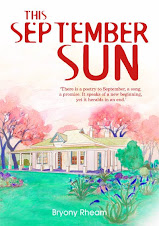.jpg)



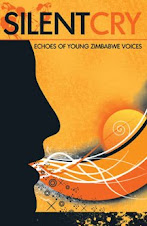
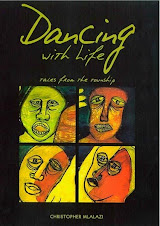

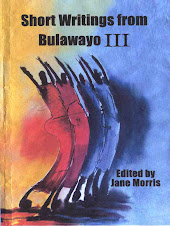


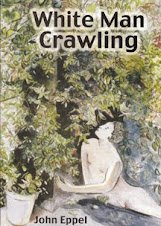










.jpg)




























No comments:
Post a Comment